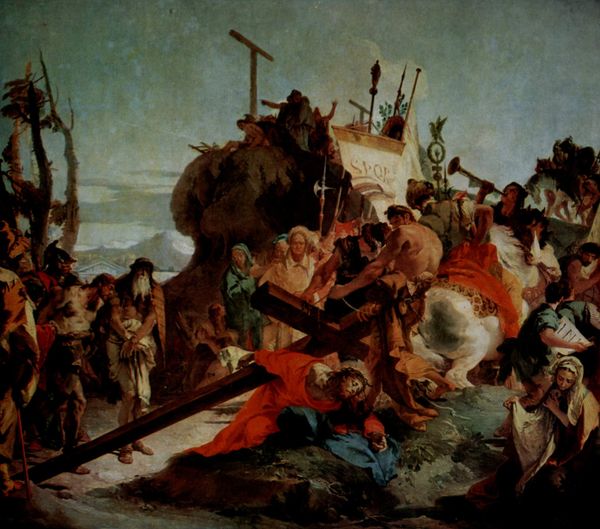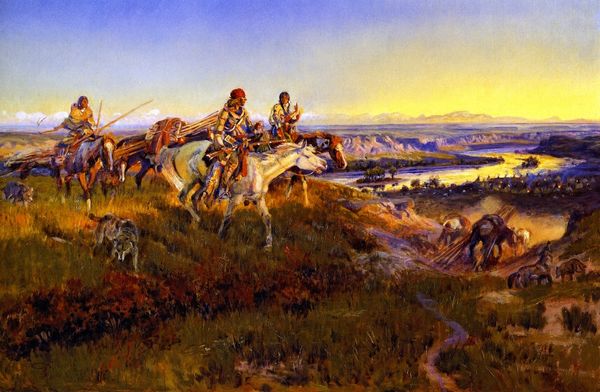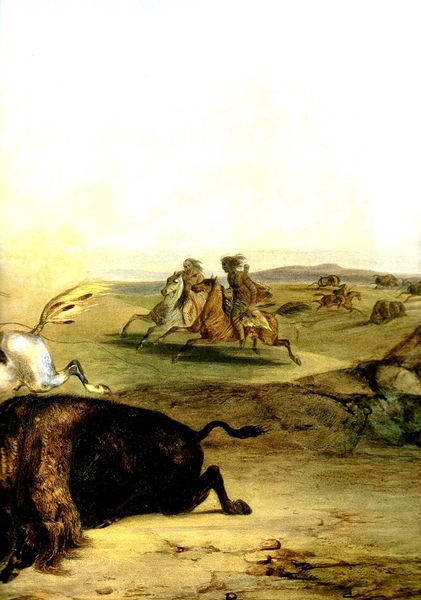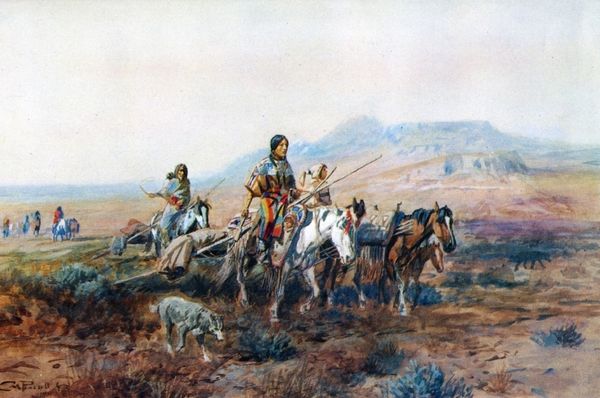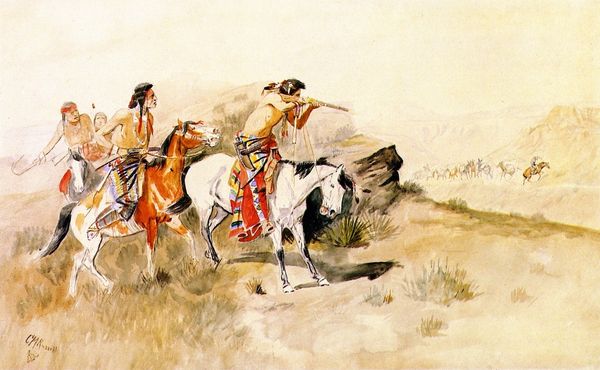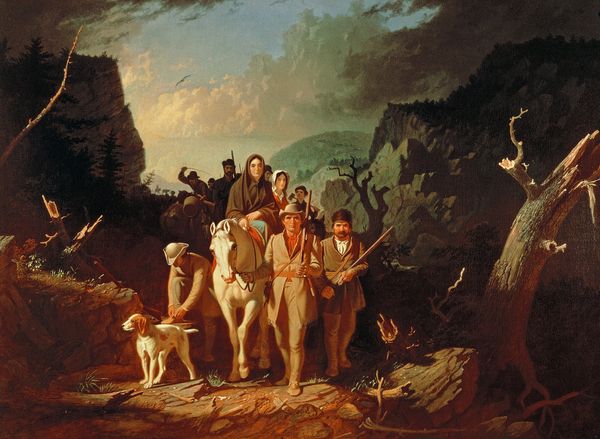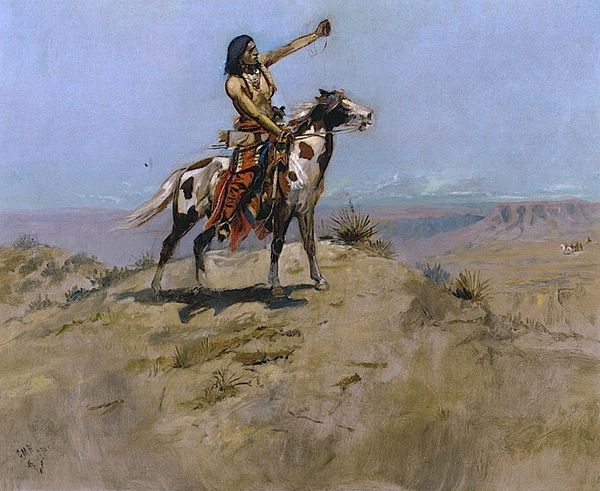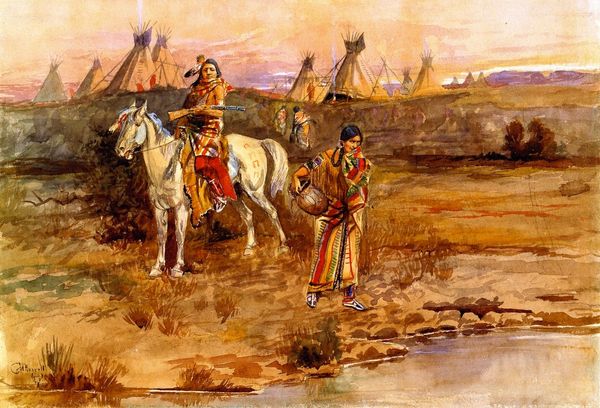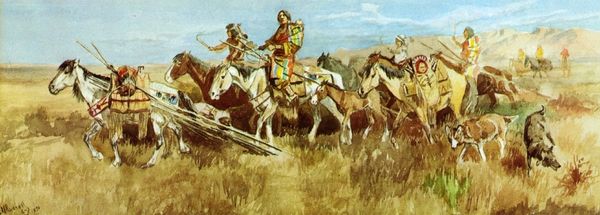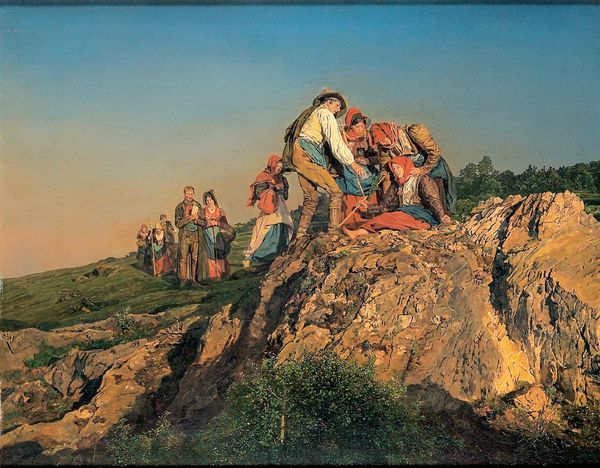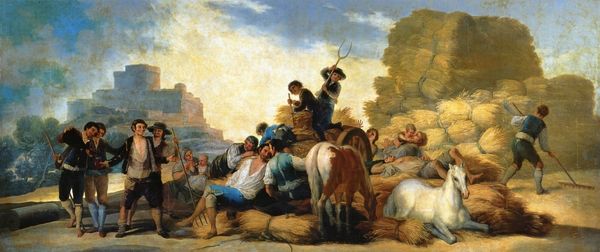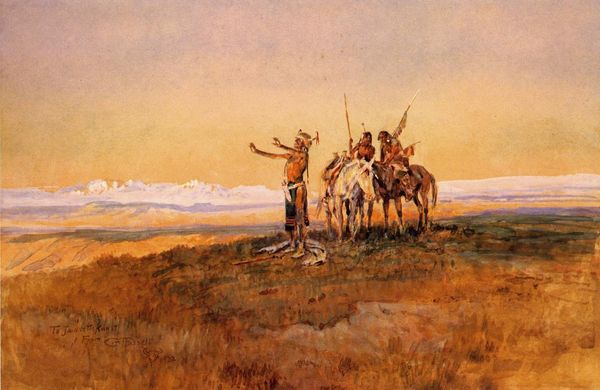
painting
#
narrative-art
#
painting
#
landscape
#
watercolor
Copyright: Public domain
Curator: Looking at Charles M. Russell’s watercolor, "Medicine Rock," completed around 1890, I'm struck by its serene, almost melancholy atmosphere. What's your immediate reaction? Editor: The watercolor rendering makes the landscape feel exposed and vulnerable. I can almost feel the grit of the rock, the way the land meets the sky. Look at the tools, materials that form both literal and figurative landscape: what’s their story? Curator: Russell was deeply invested in portraying the realities of Indigenous life, especially at a time when their culture and lands were under intense pressure from westward expansion. “Medicine Rock,” I feel, attempts to depict a moment of cultural and spiritual significance. Editor: Absolutely, and you see that attention to the materials of daily life. The way the horses are laden, the subtle suggestions of adornment in dress: nothing is simple “decoration,” it all serves a function within a community. How do we acknowledge Russell’s own positioning as he documented these interactions and settings? Curator: It’s vital to remember Russell was an outsider. Although sympathetic to Indigenous people, he interpreted their lives through his own lens, one shaped by prevailing societal attitudes and artistic conventions of the period. Editor: I’m thinking about who had access to images like this and what purpose this served them. The consumption of these romanticized portrayals almost certainly supported an economy that ran in stark opposition to its subject. The production of such an image also seems pertinent given access to materials like watercolors. Curator: Precisely. While there is an element of ethnographic documentation, Russell’s work also contributed to the mythologizing of the “vanishing West.” He had agency, yes, but he was still operating within existing artistic and market structures. How do you see the social and political forces interacting in the piece itself? Editor: In the individuals silhouetted, I see complex and deep ties to community that are very clearly communicated, if one examines their modes of existence. Despite that powerful presence, these cultural structures were already endangered due to changing social and economic systems of distribution of resources that occurred as settlers continued their encroachment. Curator: Considering the work, its history and its place within that context brings into sharp focus its impact and its contradictions. Editor: Indeed, the social implications surrounding its making can become clearer with a careful study of each material.
Comments
No comments
Be the first to comment and join the conversation on the ultimate creative platform.
